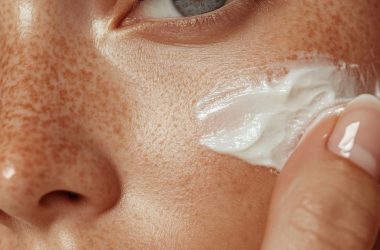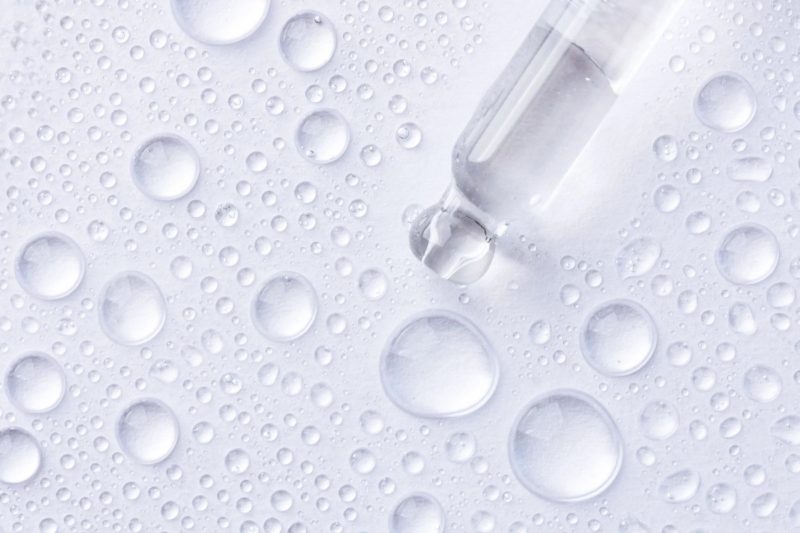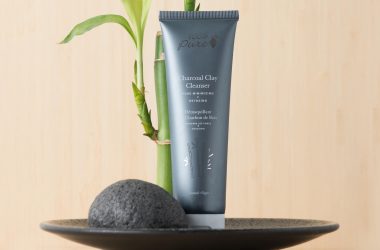Debunking the Myths About Molecular Size and Real Hydration Benefits
Posted on July 17, 2025 Written by: 100% PURE®

Let’s be honest—hyaluronic acid is everywhere in skincare. It’s in serums, creams, masks, you name it. It’s hyped as the ultimate fix for dry, dull skin, promising that plump, glowy look we’re all after. But lately, there’s a lot of talk about whether it actually lives up to the claims.
People are throwing around terms like “molecular size” and “skin penetration,” and it can get confusing fast. So we have decided to look into it. In this post, we’ll break down what hyaluronic acid really does, what’s true (and what’s not), and how to actually make it work for your skin.
What Is Hyaluronic Acid and What Does It Actually Do?
Hyaluronic acid (or HA, as it’s often called) sounds intense, but it’s actually something your body makes naturally. It’s a clear, gel-like substance that’s found mostly in your skin, eyes, and joints, where its main job is to keep things hydrated and cushioned. Think of it as your body’s built-in moisture magnet.
In skincare, hyaluronic acid acts as a humectant—which basically means it draws water into the skin and holds onto it. This makes it a favorite for boosting hydration and giving your skin that fresh, plump look. That’s why you’ll see it in so many moisturizers, serums, and hydrating treatments—it helps your skin stay soft, smooth, and more resilient.
The Molecular Size Debate: Can It Really Penetrate the Skin?
Not all hyaluronic acid is the same—its molecules come in different sizes, and that size plays a big role in how it works on your skin.
High molecular weight HA stays on the surface, helping to smooth and hydrate the outer layer.
Low molecular weight HA can reach a bit deeper, offering more lasting moisture.
Nano HA is the tiniest form and is designed to go even further, though its effectiveness and safety are still being studied.
Our skin naturally acts as a barrier, so only certain ingredients—especially smaller ones—can get through. Some experts believe lower-weight HA molecules are better for long-term hydration, while higher weights provide quick, surface-level benefits. However, very small molecules, like nano HA, may not suit everyone and can sometimes be too active for sensitive skin.
Rather than focusing on just one type, many skincare brands now use a blend of different molecular weights to hydrate multiple layers of the skin. That’s why looking for products with a combination—or labeled “multi-weight HA”—can be a smart move.

Surface Hydration vs Deep Hydration
When it comes to hyaluronic acid, it’s easy to assume that a plump, dewy look means your skin is deeply hydrated—but that’s not always the case.
Hyaluronic acid mainly hydrates the top layers of the skin, giving it that fresh, plump look. But surface hydration doesn’t always mean moisture is reaching deeper layers.
To boost effectiveness, HA works best when applied to damp skin and followed with a moisturizer. This helps seal it in and prevents it from drawing water out of your skin instead.
So if your skin looks instantly dewy, great—but real, lasting hydration depends on how you layer your products and whether your HA can actually reach below the surface.
Benefits of Hyaluronic Acid Backed by Research
Hyaluronic acid isn’t just hype—there’s solid research behind its glow-boosting claims. Studies show that it helps increase skin hydration and improve elasticity, especially when used regularly. Many people also notice a temporary softening of fine lines and rough texture, thanks to the plumping effect it has on the skin’s surface.
And here’s another great thing about HA. When layered properly, it can actually help your skin absorb other active ingredients more effectively, acting like a hydration primer. Just make sure to follow it up with a good moisturizer to lock everything in.
How to Maximize HA’s Hydration Benefits in Your Routine
Using hyaluronic acid the right way can make a huge difference. Always apply it to damp skin—after cleansing or misting—so it has water to pull in. Follow up with a moisturizer to seal it in, especially one with emollients or occlusives like squalane, glycerin, or ceramides.
Applying HA to dry skin without sealing it can actually backfire. In dry environments, it might pull moisture from deeper layers of your skin—a process called reverse osmosis—leaving you drier than before.
For best results, pair HA with other hydrating ingredients and always finish with a barrier-sealing moisturizer to lock in the glow.
Hyaluronic Acid Myths That Won’t Die
Despite all the love hyaluronic acid gets, there’s still a lot of confusion out there. Let’s clear up a few common myths:
Myth 1: All hyaluronic acids penetrate deeply into the skin
Not true. Most HA molecules are too large to go beyond the surface. Only smaller versions—like low molecular or nano HA—have a chance at deeper absorption, and even then, it’s limited by your skin’s natural barrier.
Myth 2: The more HA, the more hydration
More isn’t always better. Super high concentrations can sometimes feel sticky or even pull moisture out if not used correctly. It’s more about how you use HA than how much is in the formula.
Myth 3: You can’t overuse HA
You can. Overusing HA—especially in dry climates or without sealing it in—can lead to tightness, irritation, or increased dryness over time. Like most ingredients, balance and proper layering are key.

Best Times and Skin Types for Using HA
Hyaluronic acid is one of those rare ingredients that suits almost everyone, but some skin types and situations benefit even more.
It’s especially helpful for dry, dehydrated, sensitive, or aging skin, thanks to its soothing and moisture-binding properties. It’s also a great choice after exfoliating or sun exposure, when your skin needs extra hydration and repair support.
You can use HA year-round, but it’s smart to tweak your routine a bit. In colder, drier months, go for thicker formulas and always layer with a good moisturizer to prevent moisture loss. In warmer seasons, a lightweight serum may be all you need.
100% PURE Hyaluronic Acid–Infused Skincare
If you’re ready to try hyaluronic acid but want clean, plant-powered options, 100% PURE has some great picks. Their formulas combine HA with natural actives that hydrate, soothe, and support skin health, without synthetic chemicals or harsh additives. Here are a few worth checking out:
Rose Hyaluronic Acid Serum– A gentle, daily hydrator that soothes with rose hydrosol, calendula, and chamomile. Perfect for sensitive or easily irritated skin.
Restorative Sea Culture Replenishing Serum– Infused with nutrient-rich seaweed and hyaluronic acid to firm, hydrate, and revive dull, tired skin.
Watermelon Cucumber Water Locking Serum– Lightweight but effective, this serum blends HA with watermelon, cucumber, and aloe for a refreshing, antioxidant-rich boost.
Mushroom Peptide Moisturizer– Packed with 11 types of adaptogenic mushrooms, peptides, and HA to deeply hydrate while calming stressed or aging skin.
Wrinkle Smooth Sheet Mask– A once-a-week treatment mask soaked in HA, vitamin C, and CoQ10 for deep hydration, brightening, and smoothing fine lines.
Make Hyaluronic Acid Work for You
Hyaluronic acid isn’t just hype—it delivers real hydration when used the right way. While it mostly works on the skin’s surface, the results are visible and backed by research. With the right formula and routine, HA can be a simple, effective boost to your skin’s moisture levels.
FAQ
What is hyaluronic acid and how does it work?
Hyaluronic acid is a naturally occurring substance in the body that helps retain moisture. In skincare, it acts like a sponge, drawing water into the skin to keep it hydrated, plump, and smooth.
Is low molecular weight HA better than high?
Not necessarily better—just different. High molecular weight HA hydrates the surface, while low molecular weight (and nano) HA can reach slightly deeper layers. The best products often use a blend of both for multi-level hydration.
Can I use HA serum every day?
Yes! HA is gentle enough for daily use, even twice a day. Just remember to apply it to damp skin and always follow with a moisturizer to lock in the hydration.
Does HA help with wrinkles?
Yes, but mostly by plumping the skin and improving moisture levels, which makes fine lines look softer. It doesn’t erase wrinkles, but it can make them less noticeable and improve overall skin texture.
Should I use HA before or after moisturizer?
Use HA before your moisturizer. It should go on clean, damp skin so it can pull in moisture, then be sealed in with a cream or oil to prevent it from evaporating.









